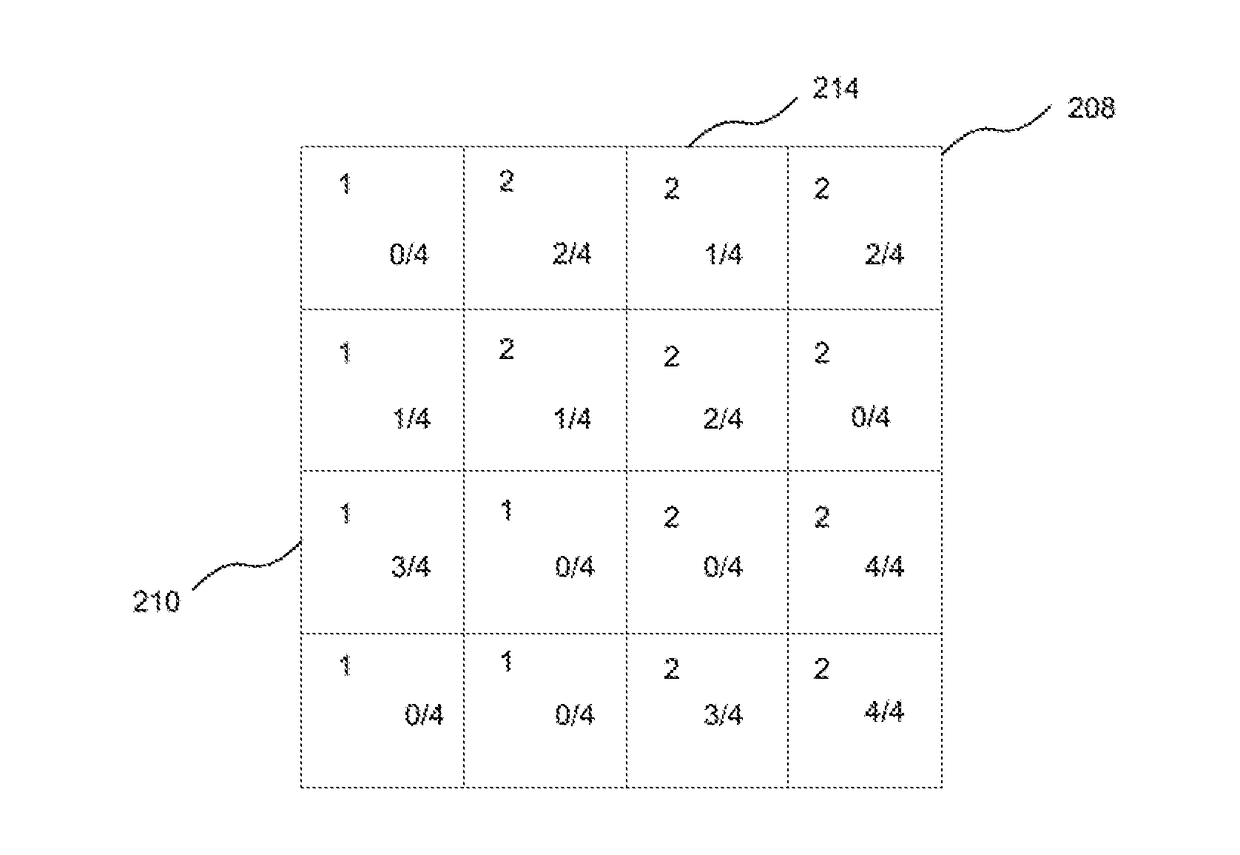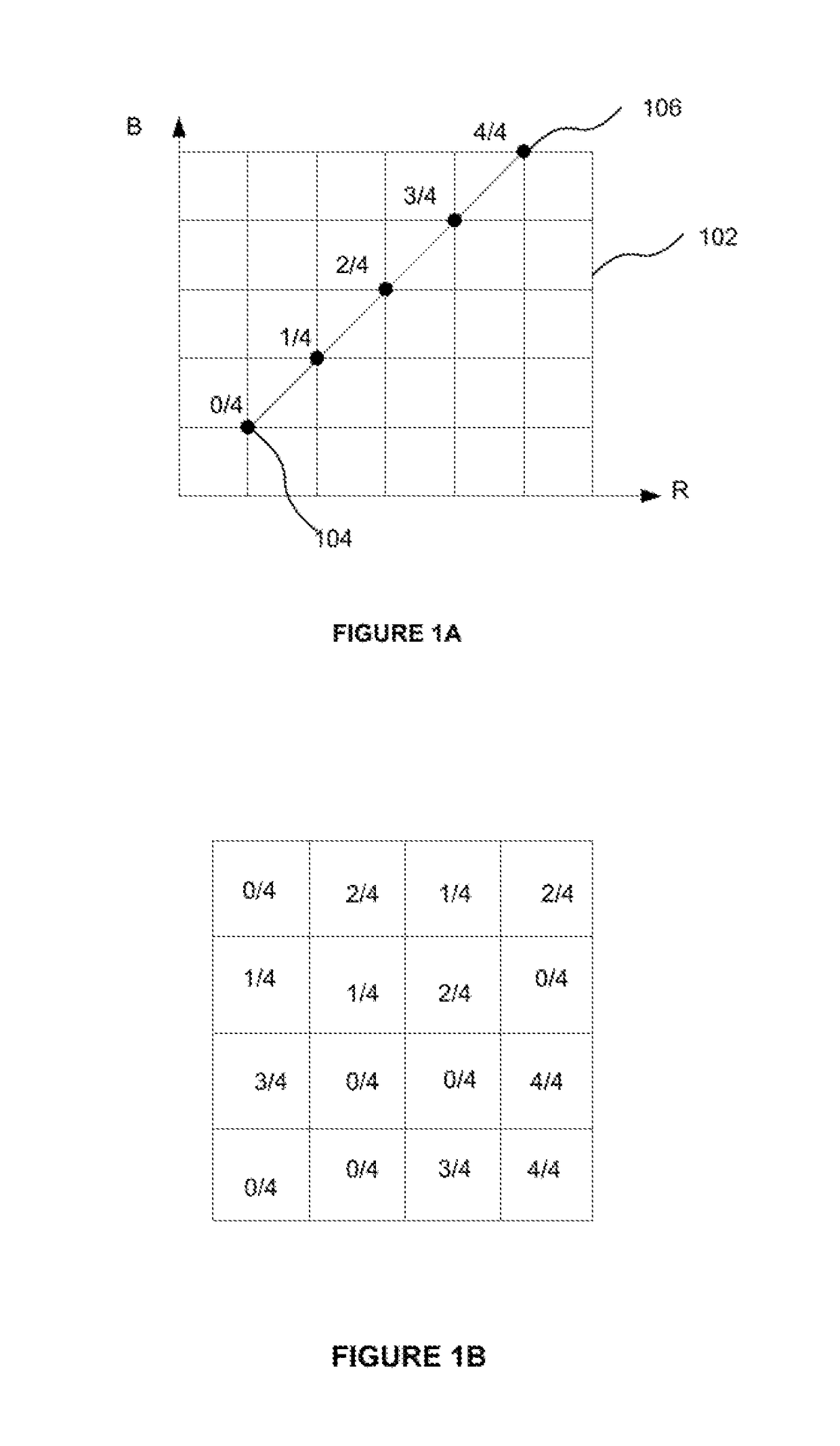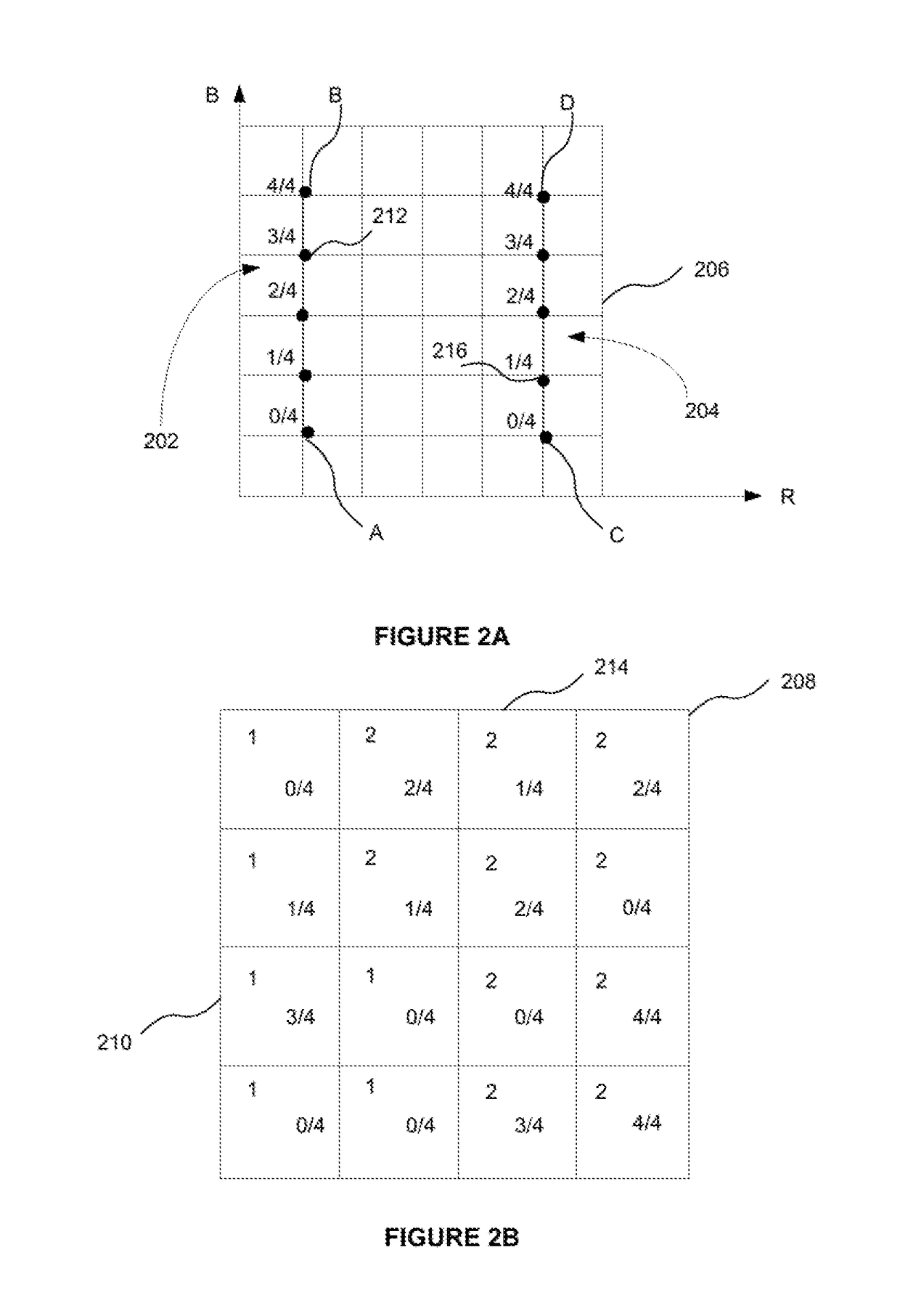Multi-Output Decoder for Texture Decompression
- Summary
- Abstract
- Description
- Claims
- Application Information
AI Technical Summary
Benefits of technology
Problems solved by technology
Method used
Image
Examples
Embodiment Construction
[0081]The present disclosure is directed to a multi-output decoder that is capable of decoding multiple texels from a block of texture data compressed according to the Adaptive Scalable Texture Compression (ASTC) format. The block of texture data may represent, or encode, an n by m block of texels. The size of the n by m texel block (as governed by the values of n and m) may be referred to as the block's footprint, and is selectable from a number of predefined sizes specified by the ASTC standard. The size of the texture data block (referred to as its memory footprint) is fixed at 128 bits. The multi-output decoder is capable of decoding a number of texels nt in the range 2≤nt≤nm from a single received data block. For example, the multi-output decoder may decode a block of p by q texels from the texture data block, where p≤n and q≤m.
[0082]In order to decode texels from the texture data block, intermediate data is decoded from the received data block that is used during the decoding ...
PUM
 Login to View More
Login to View More Abstract
Description
Claims
Application Information
 Login to View More
Login to View More - R&D
- Intellectual Property
- Life Sciences
- Materials
- Tech Scout
- Unparalleled Data Quality
- Higher Quality Content
- 60% Fewer Hallucinations
Browse by: Latest US Patents, China's latest patents, Technical Efficacy Thesaurus, Application Domain, Technology Topic, Popular Technical Reports.
© 2025 PatSnap. All rights reserved.Legal|Privacy policy|Modern Slavery Act Transparency Statement|Sitemap|About US| Contact US: help@patsnap.com



